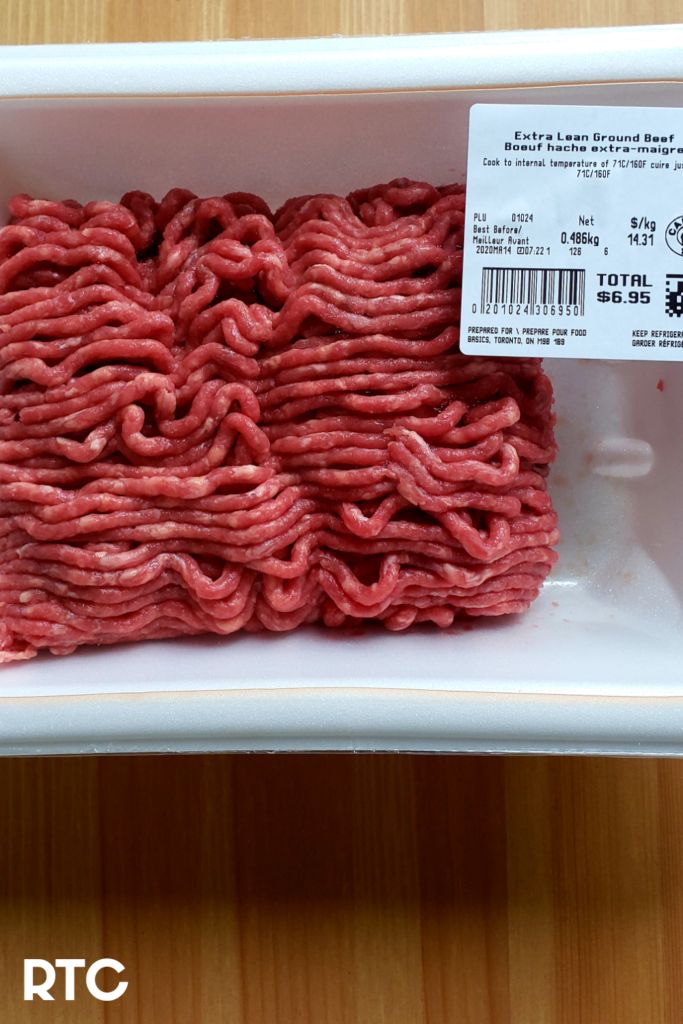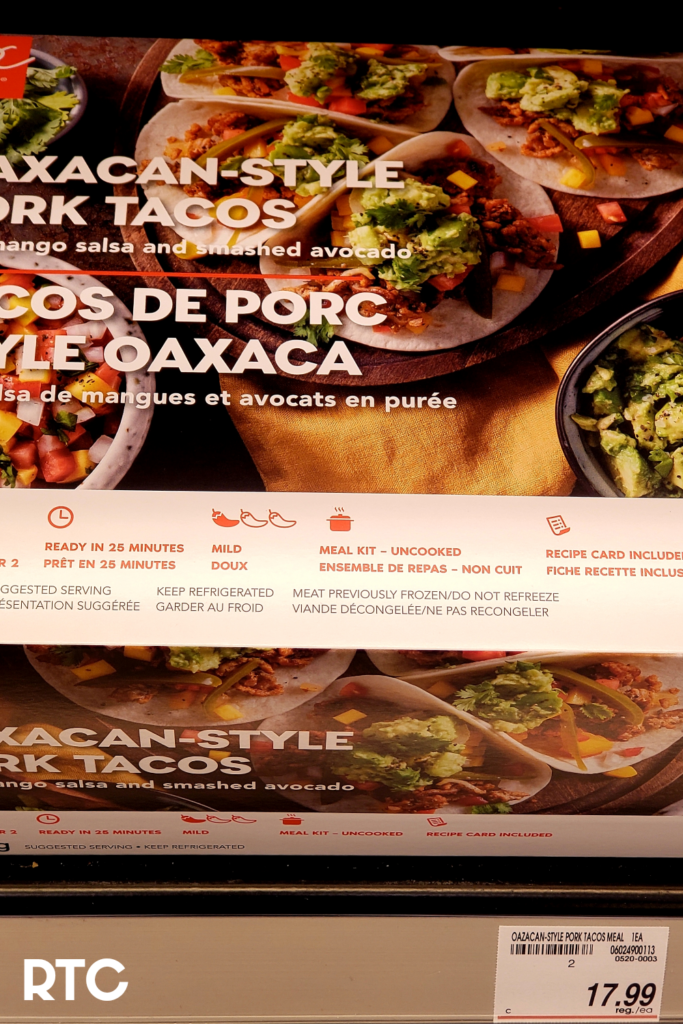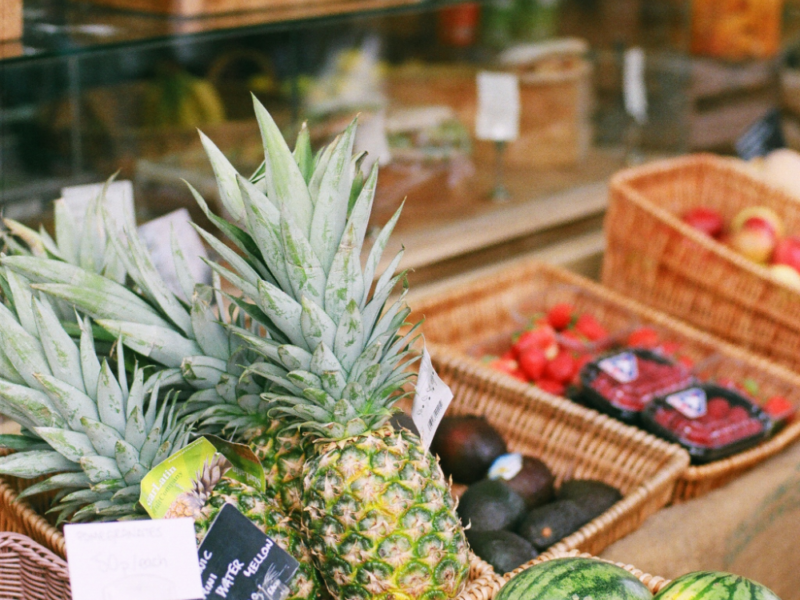Save money on groceries – Looking for ways to save money on groceries? Here are 14 highly effective ways to cut grocery costs. These are easy money saving tips.
It’s so easy to overspend at the grocery store with all of the temptations right in front of you.
Cheesecake, ice cream, chocolate bars, chips, and Coca Cola…mmmhmmm, so tasty.
But even with all these delicious items that would only cost a few extra dollars to add, lately, I have been finding new ways to save money on groceries.
Here are 14 highly effective ways to save money on groceries
Save Money on Groceries – 14 Highly Effective Ways to Reduce Grocery Costs

1. Buy Ground Coffee instead of Keurig Pods.
Admittedly, this was a difficult adjustment for me.
But now that I have switched to buying ground coffee, I’m saving a lot on coffee and I actually like the quality of the coffee better.
The reason it’s cheaper is because it lasts longer. Typically, I will have between 3 to 4 coffees per day, so I can run through a box of 12 Keurig pods in 3 days. Even though I used to buy coffee pods on sale, they still cost between $6.99 to $8.99. It’s even more for expensive brand names like Starbucks.
But with ground coffee, a 340 g bag of Starbucks Pike roast lasted nearly two weeks. Not to mention the coffee is fresher and higher quality. Plus it’s a more environmentally friendly solution.
This has cut my coffee expenses down tremendously, especially if you consider how much I used to spend on coffee:
Before making coffee at home, I bought 2 Starbuck’s coffees per day. My budget for coffee used to be $40 bi-weekly or $80 per month.
Then I switched to mostly Keurig pods, which is approximately $56 per month (3 to 4 coffee per day pace).
Now, I can drink between 3 to 4 delicious coffees per day per for $28 or less per month.
If I can keep this up, this is a simple way to keep between $28 to $52 a month in my pocket.

2. Buy Meat in Bulk
I typically make tacos once per week. I prefer to use extra lean ground beef, so I recently picked up a massive package of ground beef that was on sale.
Instead of paying $6.95 for 0.486kg of extra lean ground beef, I recently picked up over 3 times the amount for just over $8.
I was able to make 3 different meals with the same meat instead of only 1 meal for $6.95 plus ingredients. I made tacos, and ground beef with rice twice.
So, keep an eye out for bulk meat on sale. Then make multiple meals from it.

3. Build your Meal Plan based on what’s on sale
Another excellent money saver I learned during my year off was meal planning based on what’s on sale.
We all have our favourite meals of the week. For me it’s tacos. I’m also into fried rice a lot lately.
However, rather than overpaying for the taco ingredients every week, I try to have tacos when they’re on sale.
If fresh salmon is on sale but Old El Paso taco kits are not on sale, I buy the salmon and buy other ingredients to fit that.
Meal planning based on what’s on sale is a great way to save money on groceries.
4. Buy No Name Products instead of Brands – when possible
When possible, I buy no name or store branded versions of products to save money.
With some products, though, I stick to the more expensive brand because the quality is better.
For example, no name tin foil is pure garbage. It’s too thin and doesn’t even dispense properly. It’s worth it to pay more for the real tin foil.
On the other hand, with baking ingredients, cheese, rice, noodles, and some sauces, you can save a lot of money by buying the no name or store branded version.
5. Create a Grocery List and stick to it
At one point, I lived across the street from a grocery store.
What seemed like a time saver initially ended up being an expensive time waster in the long run.
This was because I stopped sticking to a grocery list. Every day after work I would stroll into the grocery store and buy whatever I felt like that evening.
Not only was this expensive, it wasted a lot of time.
A thoughtful grocery list can help you plan meals for the next week in one afternoon.
My suggestion is to think in terms of meals and make sure you have every day covered. Start with 7 dinners—buy those ingredients. Then find ingredients for 7 lunches, and so on.
6. Shop Less Frequently
Building on the previous point, creating a grocery list helps you save money by shopping less frequently.
If you plan meals and commit to your meal plan, you end up shopping less frequently.
Shopping less frequently helps you save money by avoiding impulse purchases.
7. Don’t shop in a rush or when you’re hungry
In truth, I am one of the worst culprits for this.
But I’ve been improving lately, probably because of the grocery store line-ups.
Anyways, if you shop when you are in a rush or when you are hungry, it is more tempting to buy junk food, pre-made meals or overspend.
If you shop when you are not in a rush, you have the proper time to review your grocery list and make sure to get what you actually need. This can lead to a lot of food waste and overspending.
8. Stock up on the Basics
There are a lot of fairly low cost grocery items that can be bought in advance and stored.
Examples include rice, noodles, frozen food, and spices.
When you have the basics at your disposal, it makes it easier to avoid shopping frequently.
Even when you get to the end of your groceries, there are enough miscellaneous items and basics left to get creative with meals.

9. Get creative with Leftovers
Over the past few weeks, I have been eating a lot of chicken fried rice.
My new chicken fried rice fetish began recently when I was running out of groceries.
Rather than waste the remaining misfit groceries, I decided to see what I could put together.
After reviewing my leftover options, I had the following: white Jasmin rice, frozen vegetables, eggs, soy sauce, and Sriracha sauce. So you know what I made? A vegetarian fried rice that was enough for lunch and dinner that day. It saved me an extra trip to the grocery store, and what I had left didn’t go to waste.
10. Focus on Fruits and Vegetables to avoid Tax
Those that know me personally are probably chuckling right now because I don’t enough fruits and vegetables.
However, I have been a lot more consistent with salads, bananas, and vegetables with dinner lately.
I mean, there’s nothing else to do during the Coronavirus pandemic, so I have been going all out on my meals.
Based on what I’ve noticed, fresh fruits and vegetables save a tremendous amount of money, if they are in season.
First, there is no tax on fruits and vegetables, which is a huge money saver.
Second, fruits and vegetables are generally cheaper than other food.
And third, fruits and vegetables are healthy. It’s a win-win.

11. Avoid Pre-packaged meals – Cook and Bake Yourself
I have enjoyed cooking and baking, when I have the time, from the time I was a kid.
I used to bake cookies on my own when I was a kid. Also, I experimented with my own soups and recipes. I even bought my own deep frier at one point.
But then college and jobbing came along. Due to the constant rush, I slowly developed the horrible habit of eating out and buy pre-made meals.
For probably half a year, I had pre-made caesar salads for lunch instead of making my own. Then I’d come home and pop easy-to-bake items in the oven.
Since I’ve been working part-time and have more time on my hands, though, I have been getting back to cooking and baking at home.
Last night I made my own greek cuisine that included rice, potatoes, salad, and seasoned chicken. The night before was bacon fried rice. Monday was pasta. Tonight will be tacos.
I even baked a cake and made brownies recently.
In short, I’ve been eating well and saving a lot of money in the process.
12. Don’t shop at convenience stores, drugstores, or more expensive grocery stores
This one should be a given.
But in today’s age of Ubereats and DoorDash, money is disrespected all the time.
Mainly, avoid shopping at small format grocery stores, drugstores, or more expensive grocery chains altogether.
To be perfectly honest, I do struggle with this one because I live in Toronto. Sometimes I don’t feel like doing an entire grocery shop, so I shop at Shoppers Drug Mart. I also shop at Loblaws frequently because I love the PC brand products. If possible, I prefer to grocery shop at No Frills.
Related post: 5 Expenses to Cut-out to Increase Cash Flow
13. Compare the unit price per amount for similar items
A lot of the time you think you are getting a deal by shopping at a dollar store, even though you are technically not.
In case you haven’t noticed, dollar stores often have brand name products in a slightly smaller size format that costs less.
But if you factor in the amount of grams you are getting, the price is actually not cheaper.
This same theory applies to choosing the cheapest item while grocery shopping.
Given the choice between two similar products, you can save money by comparing the amount per unit price.
14. Utilize the Flipp App
Because I decided to work part-time and am pursuing a career as a Blogger, I must keep my expenses as low as possible.
Although I have refrained from using apps or even grocery store flyers in the past, I can confirm that the Flipp App is incredibly helpful.
To briefly describe how the Flipp App works, it allows you to easily price match grocery store flyers in your area. You can check out my complete Flipp App Review here.
I just started using the app recently and am enjoying it so far.
Save Money on Groceries – Concluding Thoughts
As always on this blog, I write about and document what I am doing to reach financial independence through blogging and investing.
Normally I focus on how to build income streams through blogging and investing.
But since saving money has become a higher priority, cutting back on spending has been getting an equal amount of attention.
As such, I wrote this post to discuss the 14 ways I am able to save money on groceries.
I hope these grocery saving tips add more money to your pocket for investing and building income streams.
I am not a licensed investment or tax adviser. All opinions are my own. This post may contain advertisements by Monumetric and Google Adsense. This post may also contains internal links, affiliate links to Amazon, Bluehost, and Questrade, links to trusted external sites, and links to RTC social media accounts.
Just so you know:

Connect with RTC
Twitter: @Reversethecrush
Pinterest: @reversethecrushblog
Instagram: @reversethecrush_
Facebook: @reversethecrushblog
Email: graham@reversethecrush.com


 Net Worth is Essential, but FI Seekers should focus on Income Streams + Low Expenses
Net Worth is Essential, but FI Seekers should focus on Income Streams + Low Expenses
